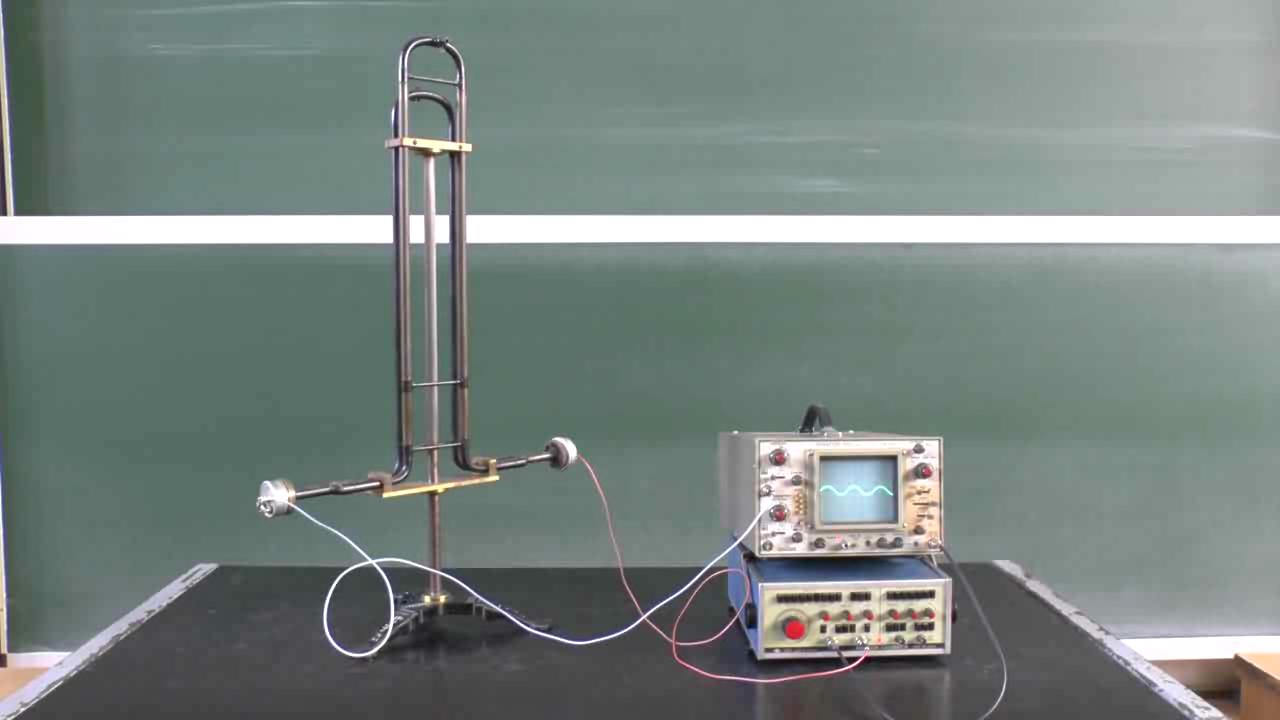„Quincke cső” változatai közötti eltérés
| (egy szerkesztő egy közbeeső változata nincs mutatva) | |||
| 7. sor: | 7. sor: | ||
| − | == | + | == Quincke's interference tube == |
| − | + | With the help of Quincke’s interference tube, or simply Quincke’s tube, we can measure the speed of sound in different gasses. On the right side of the dual tube, we can make soundwaves with varying frequency, which together are detectable on the left side. In the beginning, the two tubes are the same length, so the interference of the two signals with the same phase will have maximum intensity. By changing the length of the two tubes, the phase difference of the two signals will correspond to half a wavelength, and the intensity of the interference will be zero. With the changing of the tube length, we can continue to change the phase difference, until we get maximum intensity at a full wavelength. We can attatch compartments with different gases to the equipment. | |
</wikitex> | </wikitex> | ||
A lap jelenlegi, 2014. március 9., 13:38-kori változata
Az elhangzó szöveg
A Quincke -féle interferenciacső, vagy egyszerűen csak Quincke-cső segítségével különböző gázokban mérhető meg a hang terjedési sebessége. A kettős cső jobboldalán adott frekvenciájú hanghullámok kelthetők, amelyek együttes hatása a baloldali közös végen detektálható. A kiindulási helyzetben a két cső egyforma hosszú, ezért az azonos fázisú jelek eredő intenzitása maximumot mutat. Változtatva az egyik cső hosszát, a két ágban haladó hullámok útkülönbsége a fél hullámhossznak felel meg, zérus eredő intenzitással. Tovább növelve a csőág mozgatásával az útkülönbséget, hullámhossznyi útkülönbségnél ismét intenzitás-maximumot detektálunk. A készülékhez különböző gázt tartalmazó tartályok csatlakoztathatók.
Quincke's interference tube
With the help of Quincke’s interference tube, or simply Quincke’s tube, we can measure the speed of sound in different gasses. On the right side of the dual tube, we can make soundwaves with varying frequency, which together are detectable on the left side. In the beginning, the two tubes are the same length, so the interference of the two signals with the same phase will have maximum intensity. By changing the length of the two tubes, the phase difference of the two signals will correspond to half a wavelength, and the intensity of the interference will be zero. With the changing of the tube length, we can continue to change the phase difference, until we get maximum intensity at a full wavelength. We can attatch compartments with different gases to the equipment.
